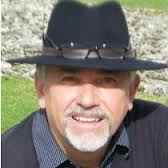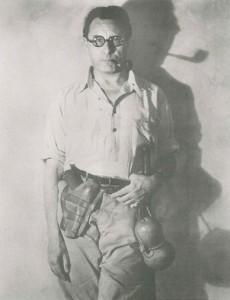Cro-Magnons
Nygren, Johan
Johan Nygren is the author of a number of papers touching on a number of subjects such as expansion tectonics(b), Cro-Magnons and Atlantis. He brings them all together in an Atlantis theory which places Atlantis in the region of Iceland(a). He believes that Cro-Magnon man lived in Atlantis(c). However, in another paper, he claims that Greenland looks like the map of Atlantis created by Athanasius Kircher(e), a suggestion put forward some years ago by Dale Huffman.
When Nygren first wrote about Atlantis, in an article now removed from the internet(d). he was sure that it could be identified as South America,
He also proposes that Atlantis produced the beginnings of civilisation.
(a) https://steemit.com/atlantis/@johan-nygren/iceland-as-atlantis-2-0
(d) Having discovered the myth of Atlantis in the past days, I’ve now conformed to that it described South America (“Isla Atlantica”) — SteemKR (archive.org) (link broken)
Langdon, Robert John
Robert John Langdon is the Brighton based British author of Prehistoric Britain: The Stonehenge Enigma[919], the first part of a trilogy(b). The book was first published in  2010 with a second edition brought out in 2013. The final chapter of the second edition is now available online(a). In it, he contends that the megalith builders came from Africa to Doggerland at the end of the last Ice Age, however, as the waters rose submerging Doggerland, the megalith builders had to move to higher ground on what we now know as Great Britain, eventually constructing Stonehenge as a memorial! Furthermore, he claims that Doggerland was Atlantis(g).
2010 with a second edition brought out in 2013. The final chapter of the second edition is now available online(a). In it, he contends that the megalith builders came from Africa to Doggerland at the end of the last Ice Age, however, as the waters rose submerging Doggerland, the megalith builders had to move to higher ground on what we now know as Great Britain, eventually constructing Stonehenge as a memorial! Furthermore, he claims that Doggerland was Atlantis(g).
Langdon claims that the Altar Stone at Stonehenge points to Doggerland, which he identifies as the location of Atlantis. He also claims that the Slaughter Stone is in fact a representation of the flooded world of those megalith builders. Langdon is highly critical of the generally accepted interpretation of various features found at Stonehenge, listing 13 items that he claims “don’t make sense”(f).
Another of Langdon’s claims is that “Cro-Magnon/Atlanteans colonised America” based on a study of blood group distribution(e).
Additionally, Langdon has now entered the debate regarding the location of Troy, moving it to the North Atlantic and citing the work of both Iman Wilkens and Felice Vinci(h).
In September 2014, Langdon changed his website(c) and published further excerpts from his books.
His second volume was published in 2016[1242]. There are also a number of related free pdf books available on his website.
>In 2022, he self-published 13 Ancient Things That Don’t Make Sense in History [2069], with some excerpts offered online(b)(h). Langdon has also published a book on the ‘lost stone avenue’ at Avebury, which is now available on the Academia website(i).<
(a) The Post Glacial Flooding Hypothesis (archive.org)
(b) http://www.prehistoric-britain.co.uk/
(c) http://www.the-stonehenge-enigma.info/
(e) The Post Glacial Flooding Hypothesis: Cro-Magnon/Atlanteans colonised America (archive.org)
(f) The Post Glacial Flooding Hypothesis: The Great Stonehenge Hoax (archive.org)
(g) http://dawn-of-the-lost-civilisation.info/dlc_atlantis
(i) https://www.academia.edu/11335093/Aveburys_Lost_Stone_Avenue *
Stacy-Judd, Robert B.
Robert B. Stacy-Judd (1884-1975) was born in London where he trained as an architect. He moved to Canada before going south and establishing a  practice in California in 1920. He was totally fascinated by Mayan culture, particularly its architecture which led him to promote the ‘Mayan-Revival’ style of architecture in the United States.
practice in California in 1920. He was totally fascinated by Mayan culture, particularly its architecture which led him to promote the ‘Mayan-Revival’ style of architecture in the United States.
His interest in the Maya went further leading him to write a number of books on the subject including The Ancient Mayas: Adventures in the Jungles of Yucatan 19340902] and the still very impressive Atlantis: Mother of Empires[607], in which he produced a chart (p.254) showing many parallels between the ancient cultures of the Americas and those of the Old World together with the suggestion that many of these perceived common features had their origin in Atlantis.
He suggested that Atlantis was situated in the Atlantic and that it suffered three major inundations in 23,000 BC, 14,000 BC and 9,600 BC (p.174/5) leading to a succession of migrations and cultural diffusion. He believed that the Akkadian civilisation of ancient Mesopotamia was founded by colonists directly from Atlantis or by Cro-Magnons from Spain (p.162)!
He also totally rejected Churchward’s claim that the lost continent of Mu was ‘positively’ the birthplace of the Mayan civilisation, saying that Churchward’s arguments “lack corroboration, are illogical and unconvincing.”
A biography [596]of Stacy-Judd has been written by David Gebhard. An aspect of Stacy-Judd that I had not been aware of, was his psychic abilities, revealed in an online article(a) by Franklin Loehr, a Congregational minister.
Basques *
The Basques of southwestern France and northern Spain have an extremely  ancient and distinctive culture that includes a language, Euskara, with no undisputed link with any other language. The late Larry Trask (1944-2004) provided a sober view(a) of the language while Edo Nyland (1941-2009) perceived extensive links between Basque and other languages, including that of the Ainu people of northern Japan!(l)
ancient and distinctive culture that includes a language, Euskara, with no undisputed link with any other language. The late Larry Trask (1944-2004) provided a sober view(a) of the language while Edo Nyland (1941-2009) perceived extensive links between Basque and other languages, including that of the Ainu people of northern Japan!(l)
Professor John Campbell in a 15-page paper entitled The Hittites in America(e) began his dissertation with a claim that the language of the Iroquois and the Basques were closely related. In Peter de Roo’s History of America Before Columbus[890], he recounts the then (1900) commonly held idea that there was a linguistic link between the Basques and various native American tribes, and puts forward the view that the Basques were originally American[890.1.164].
However fanciful this idea may seem, there appears to be little doubt that the Basques, master whalers of the 16th and 17th centuries(i), had regular contact with the coast of Labrador(j).
An 18th-century abbot, Dominique Lahetjuzan (1766-1818?), announced that his studies indicated that Euskara had been spoken in the Garden of Eden! In the 19th century, S.H. Blanc offered examples[155] from the language that implied great antiquity. One was that the Basque word for knife means literally “stone that cuts,” and that the word for ceiling means “top of the cavern”.
One website(c) is devoted to establishing a link between the Basques, Atlantis and the Algonquins of North America. Bizarrely, at the end of the 19th century, a study of land snails in the Pyrenees led Léopold de Folin to suggest that the ancestors of the Basques came from Atlantis! William Corliss supported the idea of the Basques preceding Columbus and suggested that inscriptions identified as Basque were found in the Susquehanna Valley of Pennsylvania(n).
Alexander Braghine in his own search for Atlantis[156] relates how a Basque missionary when speaking in his own language was understood by the Indians of the Peten district in Guatemala. Dr. James Rendel Harris (1852-1941), the English biblical scholar, claimed that the Mexican province of Tabasco derived its name from an ancient Egyptian word meaning land of the Basques.
A further tale from Braghine records how a person from Georgia in the Caucasus was similarly understood by Basques. This would normally be considered some sort of an urban myth but it should be noted that the linguist Arthur Holmer who is studying(b) the connections between the languages of the Caucasus and Basque believes that the number of similarities is too great to be explained by coincidence alone. A recent (2019) BBC article has highlighted claims of possible linguistic, toponymic, mythological and even DNA links between Armenians and Basques(k). It is interesting that Armenia and Georgia are neighbours.
I have been unable to find any corroboration of the claimed Guatemalan connection with the Basque language.
It is frequently noted that the Basques have a legend that they originally came from Atlantis, which they call Atlaintika. Since names, such as ‘Atlantis’, recorded by Solon were Hellenised versions of the words found in the temple ‘registers’ in Sais, it seems more likely that the Basques would have had a different word to describe any former homeland. It is probable that ‘Atlaintika’ is a modification of a loanword adopted from their neighbours.
In the 19th century, Edward Taylor Fletcher discussed possible links between the Basques and Atlantis in an 1863 paper(m).
Apart from the suggestion of language similarities, some have pointed out facial resemblances between Central American Indians (old Maya or modern Lancadon Indians) and Basques. The Basques believe in a mythical seven-headed serpent (disintegrating comet?), Erensuge while the Aztecs worshipped snakes. The Basques used to count in twenties rather than tens, a practice also found in Central America. The Basque ballgame of jai alai played with a wicker basket tied to the players’ arm is vaguely similar to pok-ta-pok played by the Maya. Fortunately, the Basques did not adopt the Mayan custom of beheading the captain of the losing team. It is reported that both the Basques and the Indians of Mexico and Peru practised artificial head flattening.
The Basques are genetically distinct, having a uniquely high incidence of blood group O, a lower than usual frequency of group A and the lowest record of group B in Europe. They have the highest frequency of Rh-negative blood in the world apart from some Berber tribes.
The Cro-Magnons were tall with larger brain capacities than modern humans. They occupied areas of France and Spain at the end of the last Ice Age. They were similar to the Guanches of the Canary Islands. It is thought that the Basques are related to them. The Cro-Magnons were also artistically talented although limited to primitive tools.
Recent studies have strongly indicated that following a study of the genomes of human skeletons from El Portalón, Atapuerca, the results point to prehistoric Iberian farmers as the closest match to the modern Basques(h).
Overall the evidence for the Basques being remnants of the survivors of Atlantis is weak.
That the Basques are an ancient people is undisputed, but a very early connection with Central America is at best, just remotely possible. That they are the Atlanteans of Plato’s tale is, in my opinion, even more unlikely.
Nevertheless, Dominique Görlitz has written a two-part article for Atlantisforschung in which he offers the suggestion that the Toltecs had been influenced by Basque visitors(o). “In addition to the well-known cultural parallels between the peoples of the Old and New Worlds , many Native American cultures have old myths about foreign culture bringers that relate to the beginnings of their culture and agriculture.”
The latest (2015) genetic studies(f) indicate that the Basques are descended from “early farmers who mixed with local hunters before becoming isolated for millennia.” It was claimed later in 2015 that the origins of the Basques had been discovered in Northern Spain after studying the DNA of eight skeletons found in the El Portolan Cave(g).
A website with a number of English and Spanish papers on the subject of the Basques is also worth a visit(d).
(a) https://www.buber.net/Basque/Euskara/Larry/
(b) Wayback Machine (archive.org) *
(c) See: Archive 2935
(d) https://www.bibliotecapleyades.net/ciencia/ciencia_basques.htm#menu
(e) https://openlibrary.org/books/OL24141925M/Hittites_in_America
(f) https://www.bbc.com/news/science-environment-34175224
(i) https://en.wikipedia.org/wiki/History_of_Basque_whaling
(j) National Geographic (08.2018)
(k) https://www.bbc.com/travel/story/20190603-the-surprising-story-of-the-basque-language
(n) Basken im Susquehanna-Tal vor 2500 Jahren? – Atlantisforschung.de
